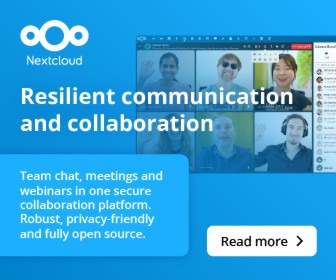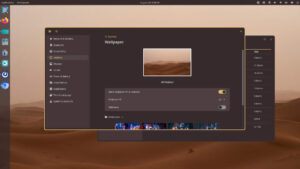Somebody should make a movie of this story, with Red Hat as the damsel who finds her power, and Oracle cast as the volatile leading man.
Red Hat on Tuesday announced that it’s partnered with Oracle to bring Red Hat Enterprise Linux to Oracle Cloud Infrastructure.
Although this doesn’t surprise me at all, 10 years ago this is something I absolutely wouldn’t expect to see.
At that time, Oracle and Red Hat were barely on speaking terms and in a feud that began in 2006, when Oracle forked RHEL and began offering it as Unbreakable Linux (now Oracle Linux with an Unbreakable Enterprise Kernel), which users could run for free as it required no support contract. Even with support, it was much less expensive than what RHEL customers were paying.
Not only that, Oracle began poaching Red Hat’s support customers by offering its own support for RHEL, which was similar to Red Hat’s support subscriptions but at a much lower cost. Rumor had it at the time that Larry Elison was as mad as hell at Red Hat, and was hoping to drive them out of business.
That feud cooled about 10 years ago, but the two have still kept their distance from each other. They’ve formed some partnerships over the years and do business together, but Oracle still clones Oracle Linux from RHEL (although it now develops its own kernel for the clone to differentiate itself), and still offers cheaper support to RHEL users through Oracle Linux Premier Support, although that support is evidently not as all-inclusive now as it was in the past.
The cooling of tensions between the two companies likely has very little to do with IBM’s ownership of Red Hat, which might be an easy conclusion for FOSS advocates to reach. Relationships were getting better even under Jim Whitehurst, Red Hat’s most successful CEO and a staunch open source advocate (who stepped down in 2020), and I’m guessing he would have jumped on the deal announced today in a Raleigh heartbeat. The ka-ching of a cash register is a powerful motivator, and you don’t build a company that’s worth millions into a company worth billions, which Whitehurst did, by turning your back on deals that put you in the middle of substantial revenue streams.
Today’s Deal in a Nutshell
The essence of today’s announcement is that RHEL is available to be spun up on Oracle’s cloud, which is good for Red Hat on several levels.
The most obvious plus for Red Hat is that Oracle is now selling RHEL support subscriptions, Red Hat’s bread and butter.
This is because you can’t use RHEL without a subscription, so spinning up an instance requires buying metered Red Hat support from the cloud provider at the time the instance is spun up. This means that every time an enterprise fires up RHEL in Oracle’s cloud, the cash registers in Raleigh start ringing, just as they do when RHEL instances are spun up on Amazon Web Services, Microsoft Azure, Google Cloud Platform, or any other public cloud.
What’s not to like? The cloud companies are selling support subscriptions for them, without Red Hat having to pay to send sales people out into the wild to knock on doors in executive towers or in data centers. This would be a good move for the open source company, even if there were no other benefits.
But there are other benefits here, and one of them is perhaps even more important to Red Hat than the instant revenue stream from the support subscriptions, because merely being available to be spun up on Oracle’s cloud increases the company’s ability to attract and keep customers.
This falls right into Red Hats vision. Since the advent of the modern cloud back in the middle aughts, Red Hat has been betting on the hybrid, multi-cloud approach, in which enterprises keep part of their compute infrastructure in an on-premises or colocation data center, and the rest in public clouds. For large customers, Red Hat also advocates using multiple cloud providers rather than utilizing the services of a single provider.
That bet, which seemed to be a long-shot to some 15 years ago, has paid off and most companies are strategically spreading their cloud consumption across multiple clouds.
This makes it essential to Red Hat to have RHEL available on all major clouds, and after struggling for traction during the last decade, Oracle’s cloud has been on the upswing in the 2020s and is now, depending on who’s talking, the fifth or six largest public cloud according to market share.
That’s enough to make it a major cloud, even though it only owns about 2% of the cloud market. Remember, 2% of a $490 billion market is $9.8 billion — or a handy piece of change, especially if it can continue to grow.
Now that Oracle can offer instant access to RHEL instances on its cloud, it becomes more attractive to old school enterprise users who still depend on Oracle’s aging business software, especially when factored in with the bundling deals they can make with Oracle.
A Little Red Hat/Oracle History
There’s not always been bad blood between Red Hat and Oracle. Back at the turn of the century (and before the advent of the cloud) the two companies were close, and Oracle probably helped Red Hat sell a lot of Red Hat Linux and then RHEL subscriptions, as Red Hat was the recommended operating system for running Oracle’s business stack.
But, as I said, that changed drastically in 2006, when Red Hat acquired open-source middleware provider JBoss for $420 million and made it a division of Red Hat. According to reports at the time, CEO Larry Ellison not only saw this as a sign that Red Hat planned to move into the business software market that Oracle dominated, but as sign of Red Hat’s disloyalty.
FOSS Force wasn’t around in those days (we got started in 2010), but I did a look-back on this story in 2016 when Microsoft made a similar move against Oracle, just in case you’re interested.
Christine Hall has been a journalist since 1971. In 2001, she began writing a weekly consumer computer column and started covering Linux and FOSS in 2002 after making the switch to GNU/Linux. Follow her on Twitter: @BrideOfLinux








